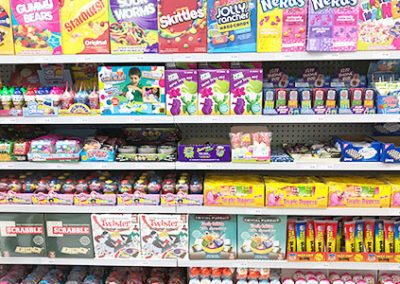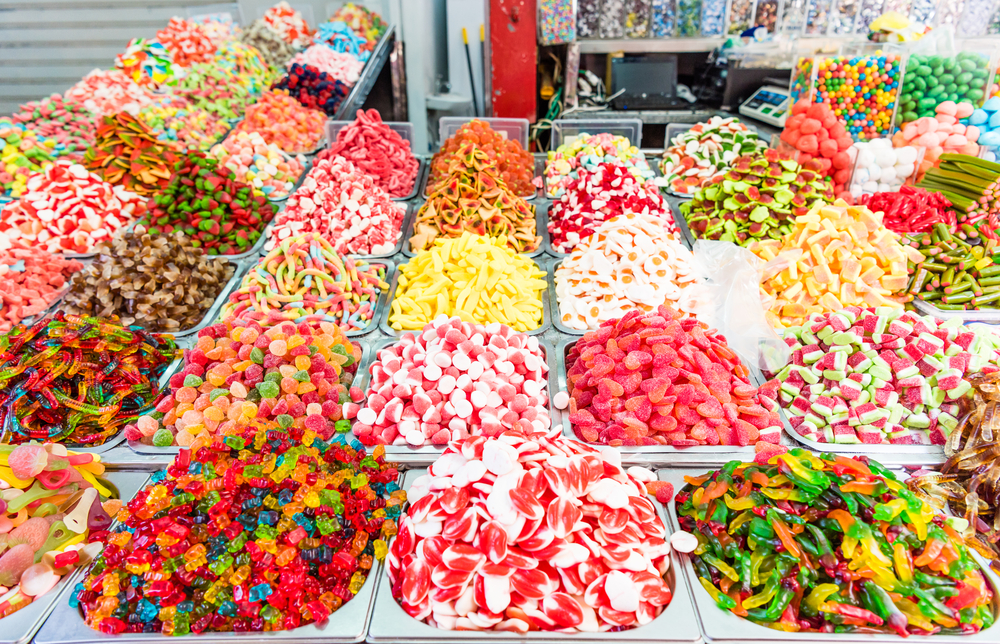Our I Luv Candi PDFs
Our I Luv Candi PDFs
Blog Article
The 25-Second Trick For I Luv Candi
Table of Contents7 Simple Techniques For I Luv CandiI Luv Candi - TruthsRumored Buzz on I Luv CandiI Luv Candi Fundamentals ExplainedThe Buzz on I Luv Candi
We've prepared a great deal of organization plans for this kind of project. Below are the typical client sections. Client Sector Summary Preferences Exactly How to Discover Them Kids Youthful clients aged 4-12 Vivid candies, gummy bears, lollipops Companion with regional institutions, host kid-friendly events Teens Adolescents aged 13-19 Sour candies, novelty items, fashionable deals with Engage on social networks, work together with influencers Moms and dads Grownups with kids Organic and much healthier alternatives, timeless candies Deal family-friendly promos, market in parenting publications Students School pupils Energy-boosting sweets, budget friendly treats Companion with neighboring schools, promote during test periods Present Buyers Individuals searching for presents Premium chocolates, present baskets Produce distinctive screens, provide customizable present choices In evaluating the financial characteristics within our sweet-shop, we have actually located that clients normally invest.Observations suggest that a normal customer frequents the shop. Specific durations, such as vacations and special occasions, see a rise in repeat brows through, whereas, throughout off-season months, the frequency might decrease. carobana. Calculating the life time value of an average consumer at the sweet-shop, we approximate it to be
With these aspects in consideration, we can reason that the typical income per consumer, over the program of a year, floats. The most rewarding clients for a sweet store are frequently family members with young kids.
This group has a tendency to make regular acquisitions, boosting the shop's profits. To target and attract them, the sweet-shop can employ vivid and spirited advertising techniques, such as dynamic display screens, memorable promos, and possibly even organizing kid-friendly occasions or workshops. Creating a welcoming and family-friendly atmosphere within the store can additionally improve the overall experience.
The Buzz on I Luv Candi
You can also estimate your own profits by using various assumptions with our financial plan for a sweet-shop. Ordinary monthly revenue: $2,000 This kind of sweet-shop is frequently a small, family-run business, perhaps known to locals but not attracting great deals of tourists or passersby. The store might provide a choice of typical sweets and a couple of homemade deals with.
The shop doesn't usually bring unusual or costly items, concentrating rather on inexpensive deals with in order to preserve regular sales. Thinking an ordinary costs of $5 per customer and around 400 customers each month, the month-to-month income for this sweet-shop would be roughly. Ordinary month-to-month income: $20,000 This sweet store gain from its calculated location in a busy city location, bring in a a great deal of customers searching for wonderful indulgences as they go shopping.
Along with its varied sweet choice, this store may likewise sell relevant products like present baskets, candy bouquets, and novelty things, supplying multiple revenue streams - carobana. The store's area calls for a higher budget plan for rent and staffing however leads to higher sales quantity. With an approximated ordinary costs of $10 per consumer and concerning 2,000 customers monthly, this shop could produce
The 9-Minute Rule for I Luv Candi
Situated in a major city and traveler destination, it's a large facility, usually spread out over numerous floorings and possibly part of a national or international chain. The shop uses an enormous variety of sweets, consisting of special and limited-edition items, and merchandise like branded garments and devices. It's not simply a shop; it's a destination.
These tourist attractions help to attract countless site visitors, dramatically boosting potential sales. The functional prices for this kind of shop are substantial as a result of the place, size, team, and features offered. The high foot web traffic and average investing can lead to substantial earnings. Assuming an average acquisition of $20 per customer and around 2,500 consumers each month, this front runner shop can attain.
Classification Instances of Expenses Typical Month-to-month Cost (Variety in $) Tips to Lower Expenses Lease and Utilities Shop rental fee, power, water, gas $1,500 - $3,500 Think about a smaller sized area, work out lease, and make use of energy-efficient lighting and appliances. Stock Candy, treats, packaging products $2,000 - $5,000 Optimize stock administration to minimize waste and track preferred things to avoid overstocking.
Advertising and Advertising and marketing Printed materials, online ads, promotions $500 - $1,500 Concentrate on affordable digital advertising and use social networks systems free of charge promo. da bomb australia. Insurance coverage Company obligation insurance policy $100 - $300 Store around for affordable insurance policy prices and think about bundling policies. Equipment and Maintenance Cash registers, display shelves, repair work $200 - $600 Buy secondhand equipment when possible and do normal maintenance to extend equipment life expectancy
I Luv Candi for Beginners
Credit Card Handling Fees Fees for refining card payments $100 - $300 Bargain lower processing fees with payment cpus or check out flat-rate alternatives. Miscellaneous Workplace products, cleansing supplies $100 - $300 Acquire wholesale and seek discounts on supplies. A sweet shop becomes successful when its overall earnings surpasses its overall fixed prices.

A big, well-located candy shop would undoubtedly have a higher breakeven factor than a small store that does not need much income to cover their expenditures. Interested concerning the earnings of your sweet store?
The Single Strategy To Use For I Luv Candi

Economic downturns that reduce consumer costs can influence sweet shop sales and earnings, making it essential for sweet stores to handle their costs and adapt to transforming market conditions to stay successful. These hazards are often consisted of in the SWOT analysis for a sweet-shop. Gross margins and web margins are essential signs utilized to determine the profitability of a sweet-shop organization.
Basically, it's the revenue continuing to be after subtracting costs straight pertaining to the sweet stock, such as acquisition costs from suppliers, production costs (if the sweets are homemade), and team salaries for those associated with production or sales. Web margin, conversely, consider all the expenditures the candy store sustains, including indirect expenses like administrative expenditures, marketing, rental fee, and tax obligations.
Candy stores generally have an ordinary gross margin.For circumstances, if your sweet store gains $15,000 each month, your gross revenue would be roughly 60% x $15,000 = $9,000. Let's highlight this with an instance. Think about a sweet shop that read the full info here marketed 1,000 candy bars, with each bar valued at $2, making the overall revenue $2,000. The shop sustains costs such as buying the candies, utilities, and wages for sales personnel.
Report this page